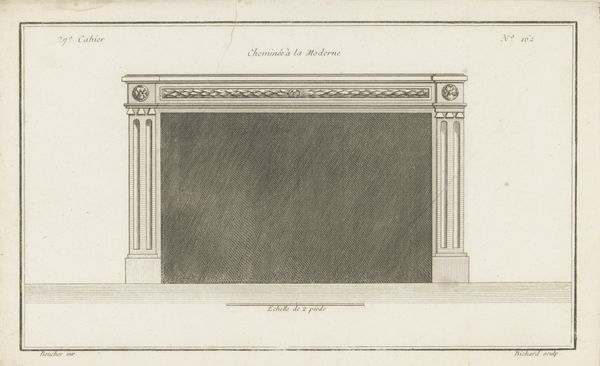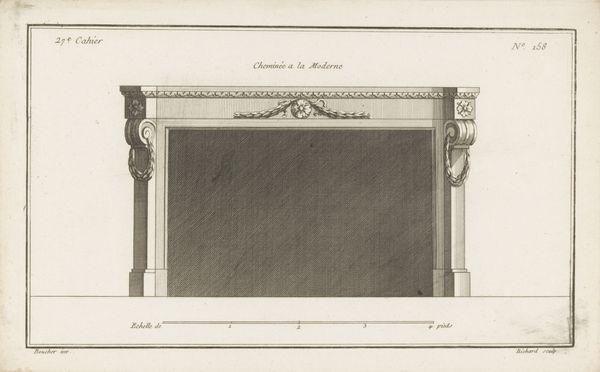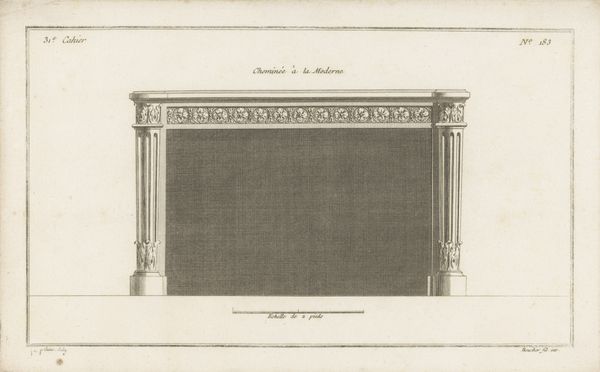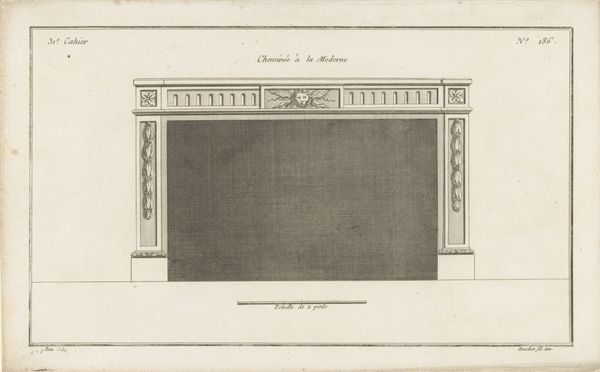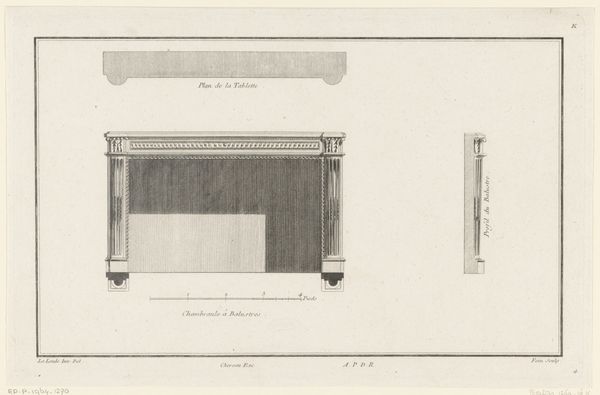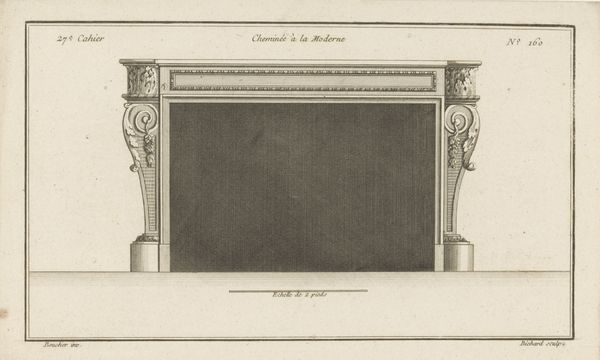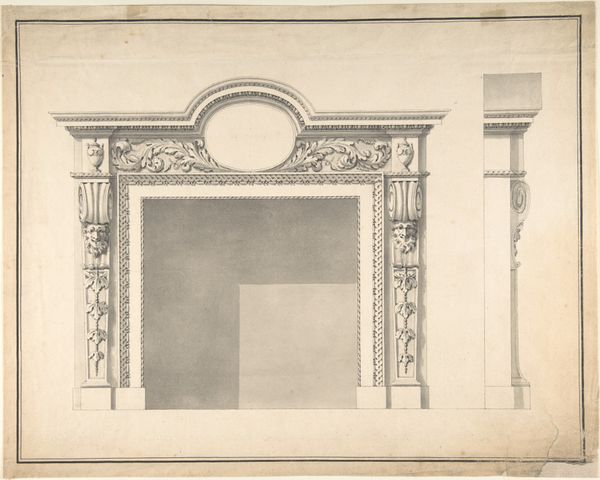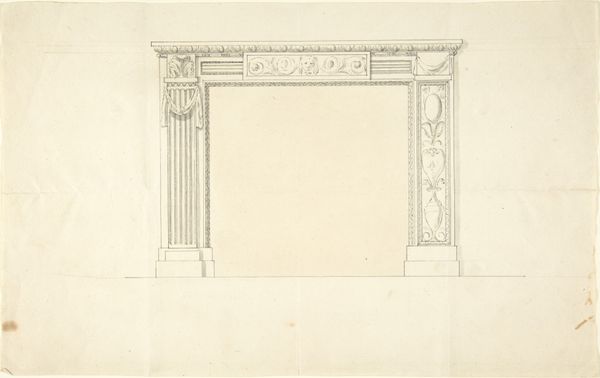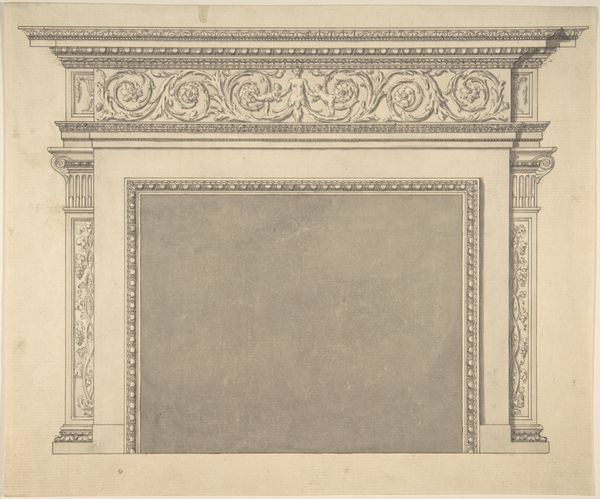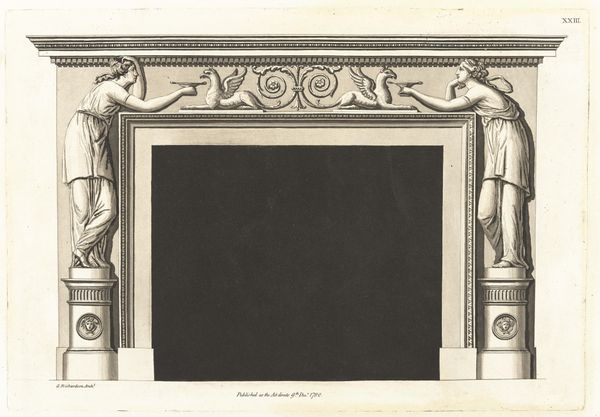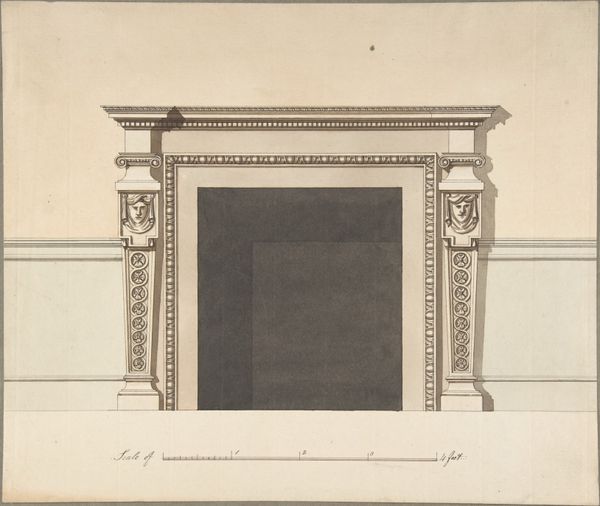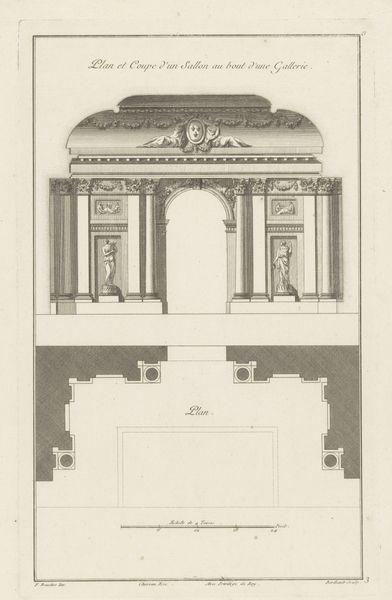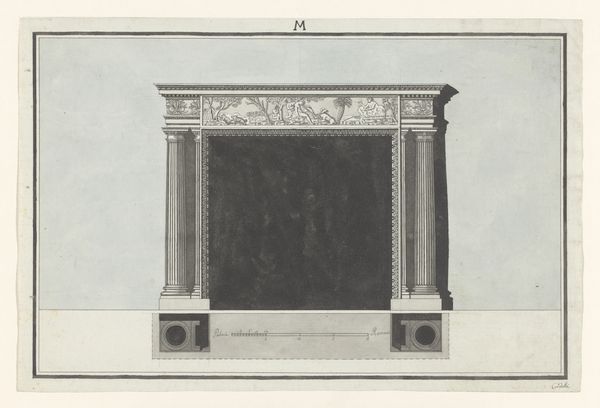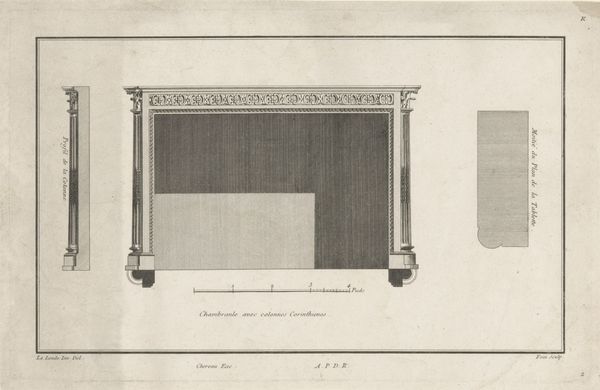
drawing, print, etching, paper, engraving, architecture
#
drawing
#
neoclacissism
# print
#
etching
#
paper
#
engraving
#
architecture
Dimensions: height 203 mm, width 329 mm
Copyright: Rijks Museum: Open Domain
Curator: Immediately, I sense a powerful blend of grandeur and reserve in this design. It evokes the formal salons of the late 18th century. What do you see? Editor: Well, we’re looking at "Haard met bladmotieven," or "Hearth with Leaf Motifs", a print by Jean-Baptiste Bichard, dating back to the period 1772-1779. It's housed here at the Rijksmuseum. The title gives us a clue; it's not just an image, but an architectural proposal for a fireplace. I notice an etching and engraving on paper. Curator: I'm intrigued by its almost diagrammatic quality—so precise and meticulously rendered! The stark black rectangle contrasts beautifully with the intricate, organic detailing of leaves adorning the mantle. There's something of a paradox, isn't there? Editor: Indeed! We're squarely in the Neoclassical period. That clean geometry you observed represents an ideal order—a visual echo of the Enlightenment’s rationalism. The motifs, like acanthus leaves, reference antiquity. They literally embed authority in domestic space. Think about the implicit power relations that underpinned such decor! Curator: It's true, those leaves do conjure up echoes of ancient Greece and Rome! But it also strikes me that for something supposedly rational and ordered, nature's creep makes things interesting! The artist captured a strange energy. It is life that softens the edges of power and logic, in some way, shape, or form. Editor: A lovely point. In that era, subscribing to a particular aesthetic was everything. Your choices cemented your relationship to power and social strata. It's always crucial to read designs through these power dynamics. Even the selection of motifs can expose those values. Curator: So, more than simply providing heat, this kind of fireplace design became a way of radiating other qualities—wealth, sophistication, a connection to a storied past! Editor: Exactly. Visual culture serves social performance, just like today. This design may seem fixed on paper, but its reception was undoubtedly part of the dynamic discourse of its time. Curator: Puts a whole new spin on keeping the home fires burning, doesn't it? I walk away seeing how, even in seemingly mundane objects, ideologies quietly burn bright! Editor: And I'm reminded how art and architecture are rarely neutral, existing in a rich—often charged—web of social meanings. Thank you for this reflective opportunity.
Comments
No comments
Be the first to comment and join the conversation on the ultimate creative platform.
